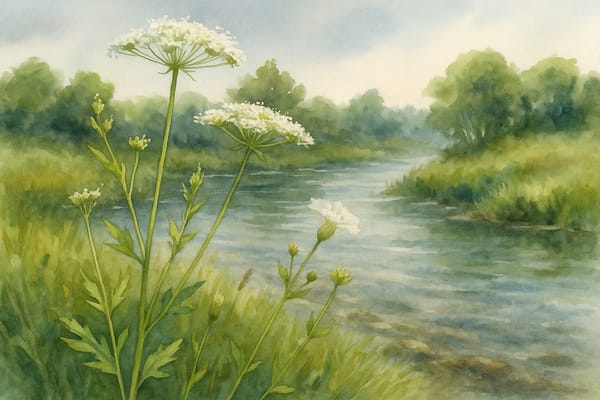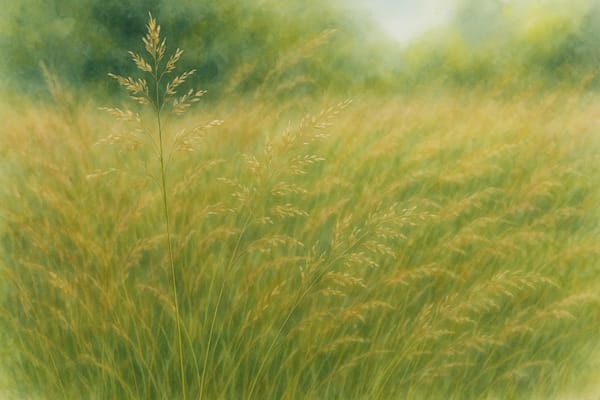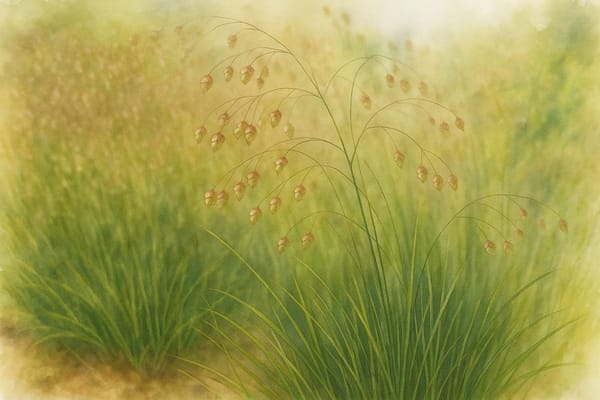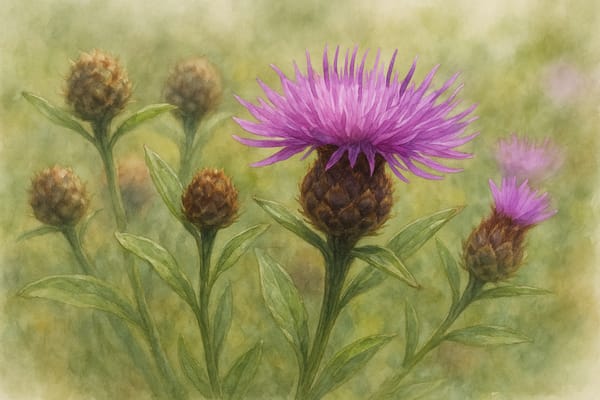A Wetland Guardian Rooted in Tradition
Historical and Cultural Significance
Towering and bold, Greater Water Parsnip once thrived across the UK’s wetlands, including parts of Cornwall. Though now rare, it carries a long history of folklore, medicinal use, and ecological value.
A Guardian of the Marsh:
In rural European and British folklore, Greater Water Parsnip was believed to ward off evil spirits. Often planted near homes, wells, or churches, it acted as a botanical guardian—its presence a protective charm for the land and those who lived beside it.
Medicinal Roots and Rituals:
Used cautiously in folk medicine, its roots were once prized for treating rheumatism, coughs, and skin ailments. While not widely used today due to its toxicity, these traditions reflect a time when wetlands were seen as both a pharmacy and a place of mystery.
A Lost Landscape:
Its decline—caused by drainage, agriculture, and habitat loss—has turned the plant into a symbol of vanishing wetland heritage. In Cornwall, it is now a rare but recognisable part of the county’s ecological memory, especially in fens and pond-edge meadows.
Growing Greater Water Parsnip in Coastal Gardens
A striking, architectural plant for gardens with permanently damp soil or water margins. Its tall stems and creamy umbels add structure, while supporting pollinators and natural balance.
| Requirement | Details |
|---|
| Light | Full sun to partial shade |
| Soil | Moist, rich, loamy soil; neutral to slightly alkaline |
| Water | Requires consistently moist soil or shallow water |
| Salt Tolerance | Low to moderate; suitable for protected coastal wetlands |
| Hardiness | Fully hardy in the UK |
Care Tips for Success
- Planting Position:
Best at the edge of ponds, bogs, or wet ditches where roots remain damp year-round. Use it to naturalise wild borders or wet meadow plantings. - Soil & Water:
Prefers nutrient-rich, loamy soils. Keep soil moist at all times. In containers, use deep pots with good moisture retention and never allow drying. - Propagation:
Sow seeds in spring or divide established clumps in autumn or early spring. Ensure healthy roots in each division. - Feeding & Pruning:
A light feed in early spring will support growth, but avoid excess. Cut back dead stems after flowering to maintain vigour. - Handling Note:
The sap may cause skin irritation; wear gloves when handling. All parts of the plant are toxic if consumed.
Special Notes for Coastal Gardens
While not salt-loving, Greater Water Parsnip excels in low-lying, sheltered coastal sites with damp ground or seasonal flooding. It’s particularly suited to rain gardens, wildlife ponds, or rewilded stream edges.
With its tall, spreading form and frothy flowers, it draws bees, hoverflies, and pollinators into the garden—and brings a hint of the lost wet meadows once common in Cornwall.
This plant is more than ornamental: it’s a statement of restoration, biodiversity, and remembrance.
Quick-Glance Table
| Step | Traditional Tip |
|---|
| Site & Soil | Damp, loamy, neutral to alkaline; near water ideal |
| Sowing/Propagation | Seeds in spring or early summer; divide in autumn/spring |
| Watering | Must stay moist at all times |
| Feeding | Balanced organic feed in spring; do not over-fertilize |
| Maintenance | Cut back spent stems; avoid letting soil dry; handle with care |
| Coastal Fit | Best for sheltered wetland edges, not directly exposed to salty wind |











